There’s a lot to know about learning to read. With pre-reading skills beginning basically at birth and learning to read extending through the second grade. . . it’s clear that learning to read is complex, and sometimes difficult.
But here’s the thing, even though it takes several years to learn to read, it doesn’t have to be stressful. This is especially true in the early childhood years.
What Teachers Want Parents to Know About Learning to Read
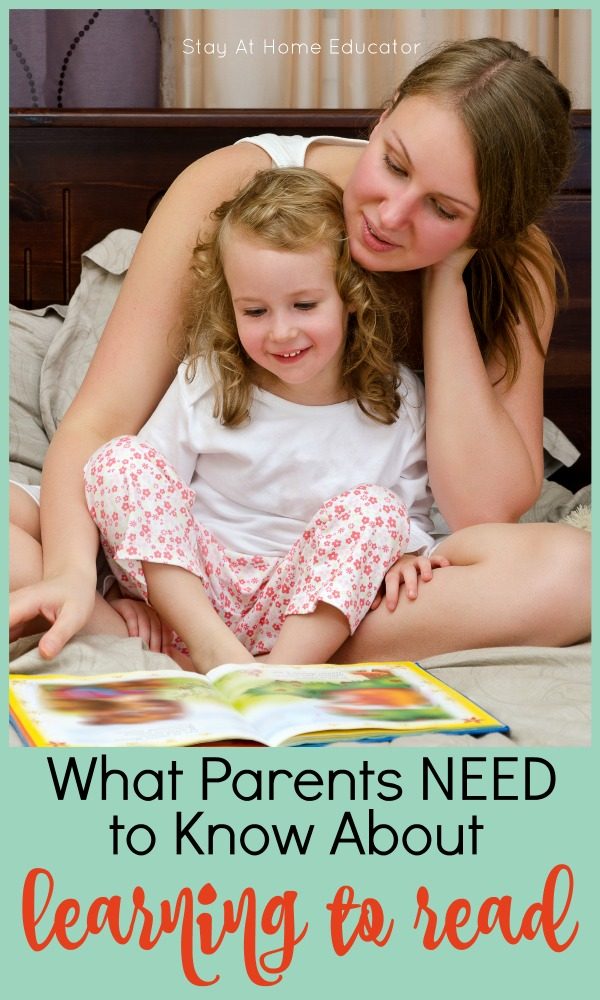
Before I had my own kids, when I was teaching elementary school, I thought I would naturally have kids who loved reading. Even when I was teaching college, when my oldest was just a baby, I was confident he would turn into an avid reader.
I creatively and thoughtfully planned his preschool days giving him all the right proportions of all the components of reading, just as I was teaching my college students to do.
He was a happy child in preschool, and eager to learn. He easily recited his letter names and sounds. He loved having books read to him, and I would often find him reading books in his bed after I’d turned the lights out. At four years old, this kid was an avid reader, even though he wasn’t “technically” reading.
So you can imagine my surprise when he went off to kindergarten and the struggle began. I wondered, “Why is my child struggling to read?!” We worked hard that kinder year, doing extra homework (which was NOT the solution, by the way), trying to help him become more comfortable and fluent in reading.
That plan failed.
By December of his kinder year, I’d pushed my son into despising reading. I slumped low, as I knew I was failing my son.
The Game Changer
I knew that something had to change. I knew that having my son hate reading meant that I (and his teacher) were doing it wrong. After countless nights of reading and research, I started developing what is now called Daily Lessons in Preschool Literacy curriculum.
-
Product on sale
 * Daily Lessons in Preschool Literacy CurriculumOriginal price was: $135.00.$99.00Current price is: $99.00.
* Daily Lessons in Preschool Literacy CurriculumOriginal price was: $135.00.$99.00Current price is: $99.00.
This preschool literacy curriculum is unlike anything else on the market.
I took the most effective and proven strategies developed by literacy experts and organized them into daily sequential literacy instruction, all while honoring age appropriate literacy development skills. Oh, how I wished I had only created this preschool curriculum a few years earlier.
But it wasn’t too late for my son.
What Parents Need to Know About Learning to Read
Teaching literacy in preschool requires precise timing and sequencing. Many parents ask themselves, “How do kids learn to read?” in an effort to help them in their early learning and provide them with helpful preschool activities. That typically results in alphabet flashcard drills.
Here is what teachers really want parents to know about learning to read in preschool/
Learning to Read is Complex
Early literacy instruction is complex. There’s a lot that goes on in the brain when learning to read.
While learning to read is a natural process for some children, it is laborious for others because learning to read is an intricate process. Three different parts of the brain are activated when reading a single word, so imagine how hard the brain must work when reading full sentences and paragraphs, or pages and books!
Related Reading
Daily Lessons in Preschool Literacy is a curriculum that reflects skill practice in many facets of reading, not just letters and decoding. It includes oral language, phonological awareness, and phonics.
Children Learn to Read at Different Rates
Some children learn to read at 4-years-old. Some children learn to read at 7-years-old. Nearly all children learn to read somewhere in between.
My oldest had all the phonics skills he needed in learning to read. But reading was still slow and laborious for him. After some assessments, we discovered it was because he lacked phonological awareness and phonemic awareness skills.
I used the following manual to do his assessments:
Children Who Come From Literacy-Rich Homes Can Still Have Reading Difficulties
A literacy-rich home is one where reading is prominent. Books line shelves and are well used. Language is rich and parents and children have meaningful conversations. In literacy-rich homes, children see their parents reading and writing, and are encouraged and praised for doing so themselves.
My son comes from a home like that.
His kindergarten teacher had a classroom like that. And yet he struggled.
You see, there is so much that goes into early literacy instruction, nothing should be left to chance. simply doing alphabet activities in preschool is not enough. Early childhood education should be met with strong preschool lesson plans, which is why I worked for years developing my Daily Lessons in Preschool Literacy curriculum.
I knew there were other kids like my son who had struggled to learn to read, and I wanted to help prevent that for others.
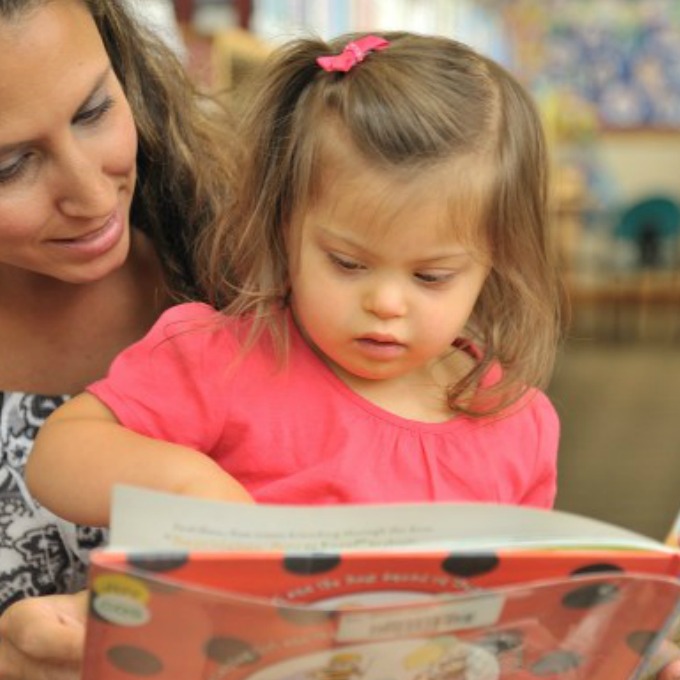
Reading Should be Fun
For some children, typically those who struggle to keep up with their peers, learning to read is not only difficult but it is also extremely laborious.
Often times, these children have a negative feeling toward reading. But the fact of the matter is that reading should be fun no matter how skilled a reader is. Children should look forward to reading instruction and proudly share their progress with caring adults.
And this is exactly why I created my Daily Lessons in Preschool Literacy curriculum to be engaging and hands-on. Each day features multiple and proven preschool literacy activities that are designed to be fun while also hitting major learning targets.
The lesson plans build upon one another, accessing preschooler’s background knowledge and by the end of the year some preschoolers will be reading words. In addition, the curriculum is loaded with accommodations that can be made for preschoolers with learning disabilities.
No More Avoidance
It was such a weight off my shoulders when my son began to enjoy reading. It was followed by joy when my son began to love reading. In fact, I installed a puck light on his bed so he could read in bed before he fell asleep.
Just last night, he finished a series of four chapter books he received for Christmas, asking if there were more and so very disappointed when I told him no.
Get a Free Sample of Daily Lessons in Preschool Literacy
Learning to read starts well before preschool and is so much more than learning letters and sounds. Young children need systematic and sequential lessons with strategies that are proven to be effective.
You can get a free, week-long sample of my preschool curriculum by filling out the form below.

I’m Sarah, an educator turned stay-at-home-mama of five! I’m the owner and creator of Stay At Home Educator, a website about intentional teaching and purposeful learning in the early childhood years. I’ve taught a range of levels, from preschool to college and a little bit of everything in between. Right now my focus is teaching my children and running a preschool from my home. Credentials include: Bachelors in Art, Masters in Curriculum and Instruction.
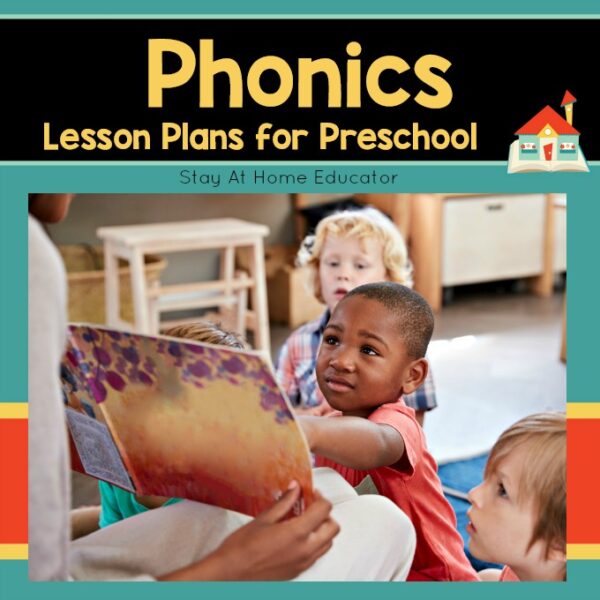
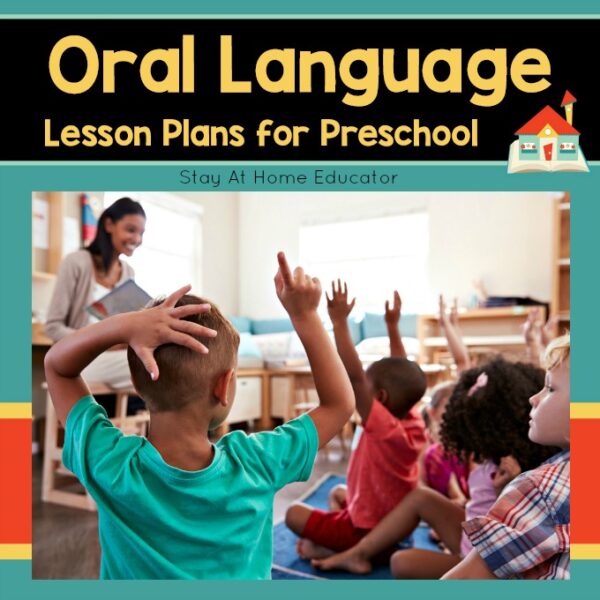
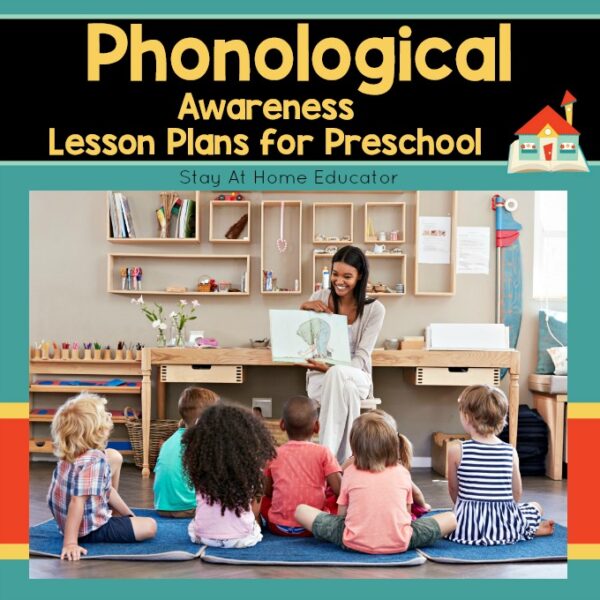

I’m glad you addressed that kids who grow up in literacy-rich homes can still have reading problems. This is one of my biggest frustrations! We’ve had so many teachers assume that because our child struggled with reading, that we didn’t read to him. (Personally, it’s so insulting!)
Reading Eggs is a wonderful resource for families.
I know completely how you feel! A literacy-rich environment is just one way to help create a reader, but it is not an end-all. I love that Reading Eggs can add just one more way to integrate many different literacy skills.